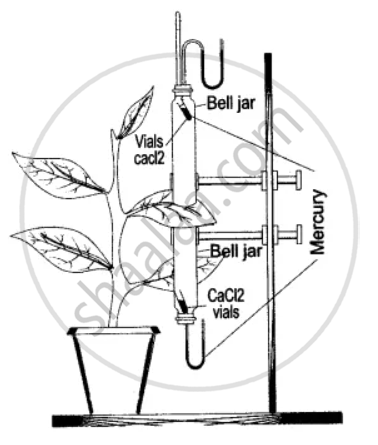Advertisements
Advertisements
Question
Draw a labeled diagram of the stomatal apparatus and label the following in it: Stoma, Guard cells, Chloroplast, Epidermal cells, and Cell wall.
Solution

APPEARS IN
RELATED QUESTIONS
The apparatus shown here is Girreau’s poto-meter designed to demonstrate unequal transpiration from the two surfaces of a dorsiventral leaf. Before keeping the leaf in between the cups, anhydrous calcium chloride (CaCl2) contained in two small vials were weighed and placed in both the cups. The ends of the cups were closed with corks through which two mercury manometers were connected. After a few hours, CaCl2 vials were taken out and weighed again.
(i) What is the purpose of keeping CaCl2 vials inside the cup?
(ii) After a few hours, the CaCl2 vials were taken out and weighed again. Will you expect any difference in weight? If so, give reasons.
(iii) What was the purpose of using a mano-meter?
(iv) What do you mean by transpiration?
Draw a neat diagram of the stomatal apparatus found in the epidermis of leaves and label the Stoma, Guard cells, Chloroplast, Epidermal Cells, cell wall and Nucleus.
Name the following:
The process of getting rid of excess water in the form of water vapour through the stomata.
Give Technical Term
Which side of the leaf has more stomata?
Write the functional activity of the following structure:
Stomata
Suppose you have a rose plant growing in a pot, how will you demonstrate transpiration in it?
Assertion (A): The loss of excess water from the aerial parts of the plant in the form of water vapor is known as transpiration.
Reason (R): Stomata of the leaf perform transpiration.
Write a short note on lenticular transpiration.
